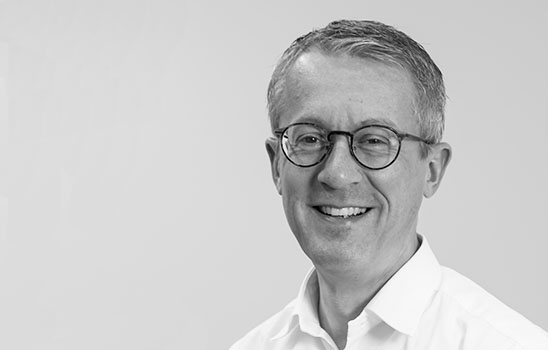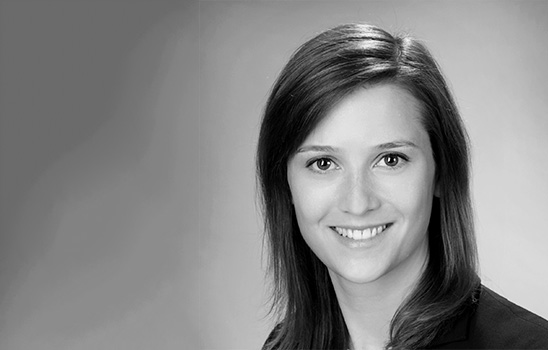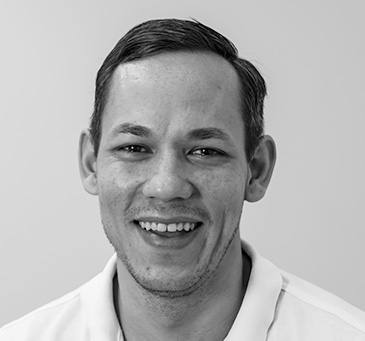
Oral health is essential for a feeling of well-being and good quality of life. Therefore the team at "Praxis am Zürichberg" are fully committed to provide appropriate solutions combined with supportive periodontal treatment to improve dental and periodontal health on a long-term basis.
Our portfolio covers general dental care procedures as well as complex rehabilitations including dental implants. We conduct interdisciplinary treatments with selected specialists in the fields of orthodontics, maxillofacial surgery and others from our well established network.
Together with you, we develop a transparent treatment plan that is tailored to your needs and expectations as well as your financial situation. We devise sophisticated solutions that are based on your wishes and the scientific findings of modern dentistry.
Our primary aim is to preserve a healthy oral environment and prevent damage to hard and soft tissues. We offer individual recall visits with our swiss graduate dental hygienists and regular preventative examinations with your dentist to protect you from further diseases of the teeth, the periodontium and the surrounding structures.
PD Dr. med. dent. A. Bindl and Dr. med. dent. C. Fritschi act as a team and discuss individual treatment strategies and scientific opinions together.
The Clinic for Tooth-Coloured and Computer-Aided Restorations at the Center of Dental Medicine at the University of Zurich was founded in 1992 by Prof. Dr. W. H. Mörmann as a clinical research facility. Prof. W. Mörmann and Dr. M. Brandestini developed and optimized the Cerec method to series production readiness.
The Cerec method enables dentists to create ceramic inlays, overlay, partial crowns, crowns and veneers by computer-aided design and manufacturing in a single treatment session. At the beginning of the 1990s, the method had become so sophisticated that it was used to treat patients as a matter of routine. However, clinical studies on the long-term behaviour of these computer-aided restorations had not been carried out. The Clinic for Tooth-Coloured and Computer Restorations was set up with the aim of documenting the long-term clinical behaviour.
In January 2007 PD Dr. med. dent. A. Bindl took over the Clinic for Tooth-Coloured and Computer Restorations and named it "Praxis am Zürichberg" due to it’s well-known location.
Applied costs are managed according to the tariff of the Swiss Dental Association SSO (www.sso.ch) and are based on CHF 3.70 (TPW) for Dr. med. dent. Alexander Deak and CHF 3.90 (TPW) for PD Dr. med. dent. Andreas Bindl. The SSO dentist's fee schedule can be shortly explained in the following way.
Every dental service is assigned a number of points according to time and effort. The sum of these points are then multiplied with the practitioner’s tariff value (TPW) to get the explicit costs in swiss francs. The individually set value (TPW) is determined by the owner of the practice and can be a maximum of CHF 5.80 (TPW). On request, we will assess a written estimate of costs as a guide for your dental service. In complex cases individual examination records are a prerequisite for treatment planning and cost estimation.
General terms and conditions
Instructions after surgical procedures
Supportive periodontal treatment
Instructions for cleaning removable appliances
Instructions for Home Bleaching/a>
Sonic toothbrush
Dental accident
The person responsible for the content of the website is
PD Dr. med. dent. Andreas Bindl
Attenhoferstrasse 8a
8032 Zurich
T 044 261 33 30
F 044 261 33 29
info@praxiszürichberg.ch

Using computer technology in the dental field has been well-established for clinicians as well as for dental technology over the past decades. In particular it is usefully deployed in the following areas: Visually recording the situation (tooth defects, gaps and soft tissue) with the aid of intraoral 3D scanners (e.g. a Cerec camera), creating computer-aided restorations from a variety of ceramic or polymer materials. Extraoral face scanners have been introduced which can be combined with cone beam computed tomography (digital 3D volume x-ray imaging) for diagnostic purposes, digital 2D x-ray imaging have replaced conventional x-ray images. Virtual planning of dental implants in the precise size and 3D position, evaluating hard and soft tissue grafting and even computer aided fabrication of drill templates for implant surgery are derived from 3D computed tomography. Digital photography and/or combined with intraoral scanning are used for diagnostic purposes and to document treatment stages, healing processes, soft/hard tissue volume changes (tooth erosion, attrition). Scans are made at a variety of points in time and the software overlays them in order to identify differences.
The basis of every treatment is carrying out an examination and appraisal leading to diagnosis. Additional records such as digital x-rays images are part of the armamentarium to certify the process (individual images, panoramic radiographs or 3D volume tomography images). It can thus be determined whether the teeth (cavities), the endodontium (pulp), the periodontium (gums), or the oral cavity show signs of disease and enable the decision making process of which treatment strategy should best be applied.
Strong and acute pain in particular is far the worst condition. Based on the examination and appraisal, we locate the cause of the pain and perform the required treatment. Whenever possible, we try to arrange an appointment on the day that you call us.
Our primary aim is to preserve and prevent damage to hard and soft tissue in the oral cavity. To protect you from further diseases of the teeth, the periodontium and the surrounding structures, we offer individual prophylactic (preventative) treatment. The dental hygienist is a primary healthcare professional that checks the condition of the oral cavity and oral hygiene. She aims at removing calculus surrounding the teeth and provides a final polish to obtain healthy tissues. Motivation and Instructions to achieve better daily oral hygiene at home are given. Support is essential before, during and for the long-term maintenance of prosthetic rehabilitations on teeth and implants. Depending on the individual oral conditions, the appropriate recall interval (3-12 months) is set. In the event of chronic periodontitis (inflammation of the tooth supporting bone and gum), the dental hygienist is challenged to reduce/eliminate inflammation around the teeth and stabilize the process of losing tooth attachment. The active treatment phase of the supportive periodontal maintenance consist of several close set appointments depending on the individual situation followed by an evaluation at around 3 months and requires good patient compliance.
Digitally created x-ray images are produced with less radiation exposure in comparison to conventional x-ray images. No chemicals are required to develop the images. They can be viewed immediately after they have been produced and can be archived safely. Panoramic radiographs (large overview images) are also produced digitally.
We offer individually customised whitening kits and provide gentle bleaching agent (Opalescence PF™ 16% Carbamide Peroxide). The patient has total control over the whitening process which is repeated until desired tooth shade is reached. Sometimes it is not only the dark colour of the teeth that bothers patients but also their shape or gaps between the teeth. Tooth-coloured filling materials can be applied to remedy minor misalignments and close gaps.
Tooth-coloured composite is favourably used for minor tooth cavities such as small interdental defects or for the anterior teeth. The filling is adapted to the defect so that maximum tooth structure is preserved. The composite is directly applied and shaped by the dentist and then cured with blue light. The material is adhesively bonded to the natural tooth structure. Final contours, texture and glossy polish give the material natural appearance.
With more extensive tooth defects, a reliable solution is a tooth-coloured ceramic restoration. Conventionally, a dental impression is made and a dental laboratory is assigned to fabricate the restoration. The tooth must be fitted with a temporary filling until the permanent restoration has been incorporated. With the CEREC method, the prepared tooth is digitally recorded in the patient's mouth with a 3D camera instead of a silicone impression. A 3D model of the involved teeth is generated with the software and the restoration is tailor-made for the patient. At the same session, the restoration is milled out of a ceramic block by a milling machine, and then adhesively placed.
Veneers are highly esthetic porcelain restorations that mimic the natural textured and lustrous tooth surface and shade. They are indicated when pronounced defects of the anterior teeth have to be treated. They are the thinnest (minimal invasive) restorations and can improve esthetics by changing tooth size and form, closing gaps or correcting moderate tooth position. Veneers are either crafted by the dental technician or can be fabricated using the CEREC method.
If the dental pulp (soft tissue and nerve tissue inside a tooth) is inflamed or infected tooth canal treatment must be performed (e.g. within the framework of the treatment of acute pain). The pulp tissue is removed and the root canals are prepared, cleaned, disinfected and filled again using special tools. If treated root canals become infected or if the seal deteriorates, the treatment can be renewed and improved. Root canal treated teeth with a definitive restoration (Ceramic) provide the best seal in the long-term. The use of an operating microscope allows to visualise the complex anatomy inside the tooth and accurately prepare the root canals.
Traditional x-ray technology creates two-dimensional images of anatomic structures (e.g. a two-dimensional panoramic radiograph). 3D cone beam computed tomography displays a three-dimensional volume and therefore a reliable assessment. For example the evaluation of the exact position and relationship of wisdom teeth to the mandibular nerve or the precise analysis of the bone situation prior to dental implant surgery. With our two digital 3D volume tomography units, GALILEOS and ORTHOPHOS XG 3D, we can offer you a three-dimensional view of anatomical structures.
Dental implants can retain fixed crowns and bridges or support removable dental prosthesis. Implants are carefully planned and have to be accurately installed surgically. 3D x-ray images can facilitate implant diagnostics including bone grafting and further aid for guided surgical procedures with machined templates deriving from the diagnostic 3D-Data, which is especially helpful in more complex situations.
Seriously damaged or fractured teeth are to be removed, before the jaw area is inflamed due to infection. In certain cases, wisdom teeth have to be surgically removed. Dental surgery also includes regenerative procedures like bone and/or soft tissue grafting to prepare site defects for dental implants as well as resective procedures of periodontal surgery or mucogingival esthetic surgery.
Tooth or implant supported fixed dental prosthesis provide functional and esthetic replacement of missing teeth. Fixed bridgework can be made with high-strength zirconia frameworks. Conventionally silicone impressions are taken and sent to the dental laboratory. In ideal situations we can digitally record the situation using the CEREC camera and send the data to the dental laboratory via internet.
Removable dental prosthesis replace teeth and tissue of partially or completely edentulous jaws. The retention is accomplished with the use of attachments (clasp, telescopic crowns, root caps, etc. ) to the remaining teeth or prepared roots. Dental implants can further support and retain removable dental prosthesis.
We also look after the younger generation within the framework of our children's dentistry programme. In more complex situations, we work together with a specialised paediatric dentist. Unfortunately, we cannot offer orthodontic treatment in our practice. However, we work very closely together with two orthodontists in the near vicinity. Furthermore, we also offer night guards (Michigan-type occlusal splints, NTI splints) in the event of pain related to the masticatory muscles or the joint of the jaw.


PD Dr. med. dent. Andreas Bindl
Dentist
Languages: D, E

Dr. med. dent. Corinna Fritschi
Dentist
Languages: D, E
Due to his many years of experience working at the Center of Dental Medicine at the University of Zurich and his postdoctoral qualification focussing on restorative computer-aided dentistry, PD Dr. A. Bindl has developed extensive knowledge of modern dentistry and computer-aided dentistry.
Career
1994
Dissertation and doctorate, Freie Universität Berlin
1994-1997
Assistant at the Clinic for Tooth-Coloured and Computer Restorations (Prof. Dr. W.H. Mörmann), Clinic of Preventive Dentistry, Periodontology and Cariology at the Center of Dental Medicine at the University of Zurich
since 1997
Lectureships at the medical faculty of the University of Zurich for restorative dentistry, periodontics and endodontics & restorative computer-aided dentistry
1997-2007
Senior Physician and Head of the Clinic for Tooth-Coloured and Computer Restorations (Prof. Dr. W.H. Mörmann), Clinic of Preventive Dentistry, Periodontology and Cariology at the Center of Dental Medicine at the University of Zurich
2006
Postdoctoral qualification (authorization to teach at a university) at the University of Zurich for "Dentistry with special focus on restorative computer-aided dentistry"
since 2007
Takeover of the Clinic for Tooth-Coloured and Computer Restorations, running it as the "Praxis am Zürichberg", Senior Physician (20% post) at the department for restorative computer-aided dentistry, Clinic of Preventive Dentistry, Periodontology and Cariology at the Center of Dental Medicine at the University of Zurich.
Awards
2003
Annual award 2003 from the "Deutsche Arbeitsgemeinschaft für Keramik e.V." [German Ceramics Working Group]
2005
Best Manuscript of 2005 Award, International Journal of Prosthodontics, Quintessence International
Dr. C. Fritschi has acquired a very profound knowledge in modern dentistry with a focus on restorative computer dentistry through her work at the Dental Center of the University of Zurich.
Career
2008-2013
Study of dentistry, state examination, Julius-Maximilians-University of Würzburg
2014-2017
Assistant dentist in the field of computer-assisted restorative dentistry, University of Zurich
2016
Doctoral thesis and attainment of a doctorate, University of Zurich
Since 2017
Dentist in the practice at Zürichberg, Zurich
2017
Certificate in Digital Volume Tomography (SGDMFR)
Since 2017
Instructor and visiting dentist at the Clinic for Restorative & Preventive Dentistry (Department of Computer-assisted Restorative Dentistry) of the Dental Center, University of Zurich

Anne Buttin-Fasel
Dental hygienist HF
Languages: D, E, F, SP

PD Dr. med. dent. Andreas Bindl
Attenhoferstrasse 8a
8032 Zurich
T 044 261 33 30
F 044 261 33 29
info@praxiszuerichberg.ch
![]()
We recommend to take the no. 5 tram (from Bellevue) or the no. 6 tram (from Central) up to Voltastrasse. In driving direction turn right down the road onto Moussonstrasse and continue straight on (approx. 300m) along Nägelistrasse until you cross over Zürichbergstrasse onto Attenhoferstrasse there you will find us on the right hand side (50m).
There are two parking spaces for patients in our underground car park. Please contact the patients' secretary to reserve a space.